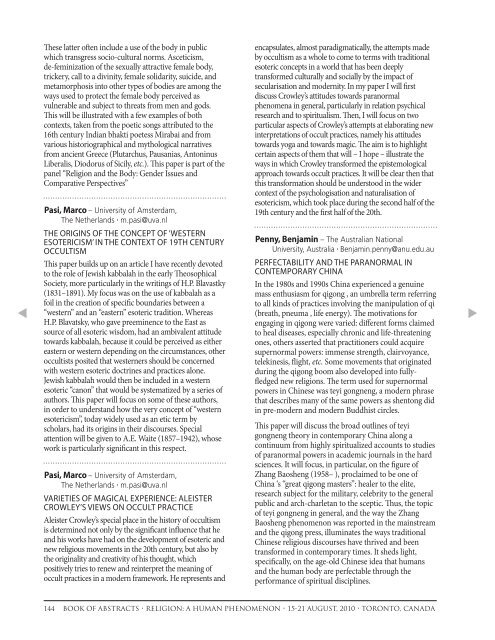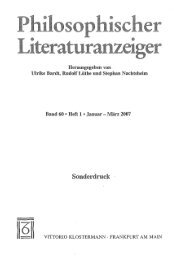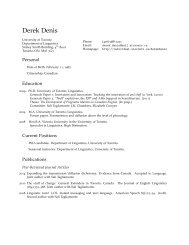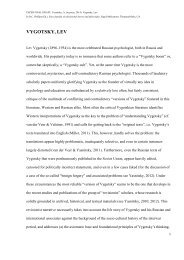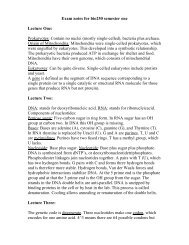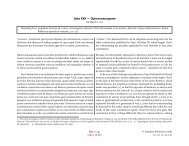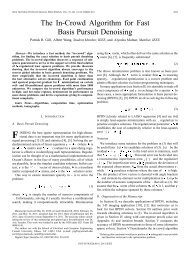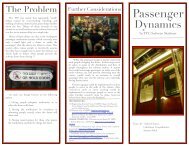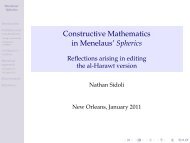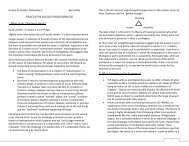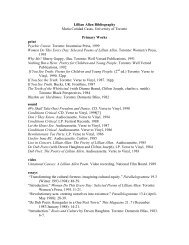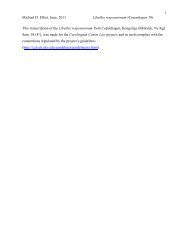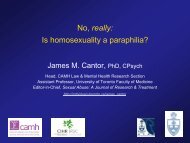BOOK of ABSTRACTS XXTh WORld COngReSS InTeRnATIOnAl ...
BOOK of ABSTRACTS XXTh WORld COngReSS InTeRnATIOnAl ...
BOOK of ABSTRACTS XXTh WORld COngReSS InTeRnATIOnAl ...
Create successful ePaper yourself
Turn your PDF publications into a flip-book with our unique Google optimized e-Paper software.
These latter <strong>of</strong>ten include a use <strong>of</strong> the body in public<br />
which transgress socio-cultural norms. Asceticism,<br />
de-feminization <strong>of</strong> the sexually attractive female body,<br />
trickery, call to a divinity, female solidarity, suicide, and<br />
metamorphosis into other types <strong>of</strong> bodies are among the<br />
ways used to protect the female body perceived as<br />
vulnerable and subject to threats from men and gods.<br />
This will be illustrated with a few examples <strong>of</strong> both<br />
contexts, taken from the poetic songs attributed to the<br />
16th century Indian bhakti poetess Mirabai and from<br />
various historiographical and mythological narratives<br />
from ancient Greece (Plutarchus, Pausanias, Antoninus<br />
Liberalis, Diodorus <strong>of</strong> Sicily, etc.). This paper is part <strong>of</strong> the<br />
panel “Religion and the Body: Gender Issues and<br />
Comparative Perspectives”<br />
Pasi, Marco – University <strong>of</strong> Amsterdam,<br />
The Netherlands • m.pasi@uva.nl<br />
tHe origins <strong>of</strong> tHe concePt <strong>of</strong> ‘Western<br />
esotericism’ in tHe context <strong>of</strong> 19tH century<br />
occultism<br />
This paper builds up on an article I have recently devoted<br />
to the role <strong>of</strong> Jewish kabbalah in the early Theosophical<br />
Society, more particularly in the writings <strong>of</strong> H.P. Blavastky<br />
(1831–1891). My focus was on the use <strong>of</strong> kabbalah as a<br />
foil in the creation <strong>of</strong> specific boundaries between a<br />
“western” and an “eastern” esoteric tradition. Whereas<br />
H.P. Blavatsky, who gave preeminence to the East as<br />
source <strong>of</strong> all esoteric wisdom, had an ambivalent attitude<br />
towards kabbalah, because it could be perceived as either<br />
eastern or western depending on the circumstances, other<br />
occultists posited that westerners should be concerned<br />
with western esoteric doctrines and practices alone.<br />
Jewish kabbalah would then be included in a western<br />
esoteric “canon” that would be systematized by a series <strong>of</strong><br />
authors. This paper will focus on some <strong>of</strong> these authors,<br />
in order to understand how the very concept <strong>of</strong> “western<br />
esotericism”, today widely used as an etic term by<br />
scholars, had its origins in their discourses. Special<br />
attention will be given to A.E. Waite (1857–1942), whose<br />
work is particularly significant in this respect.<br />
Pasi, Marco – University <strong>of</strong> Amsterdam,<br />
The Netherlands • m.pasi@uva.nl<br />
varieties <strong>of</strong> magical exPerience: aleister<br />
croWley’s vieWs on occult Practice<br />
Aleister Crowley’s special place in the history <strong>of</strong> occultism<br />
is determined not only by the significant influence that he<br />
and his works have had on the development <strong>of</strong> esoteric and<br />
new religious movements in the 20th century, but also by<br />
the originality and creativity <strong>of</strong> his thought, which<br />
positively tries to renew and reinterpret the meaning <strong>of</strong><br />
occult practices in a modern framework. He represents and<br />
encapsulates, almost paradigmatically, the attempts made<br />
by occultism as a whole to come to terms with traditional<br />
esoteric concepts in a world that has been deeply<br />
transformed culturally and socially by the impact <strong>of</strong><br />
secularisation and modernity. In my paper I will first<br />
discuss Crowley’s attitudes towards paranormal<br />
phenomena in general, particularly in relation psychical<br />
research and to spiritualism. Then, I will focus on two<br />
particular aspects <strong>of</strong> Crowley’s attempts at elaborating new<br />
interpretations <strong>of</strong> occult practices, namely his attitudes<br />
towards yoga and towards magic. The aim is to highlight<br />
certain aspects <strong>of</strong> them that will – I hope – illustrate the<br />
ways in which Crowley transformed the epistemological<br />
approach towards occult practices. It will be clear then that<br />
this transformation should be understood in the wider<br />
context <strong>of</strong> the psychologisation and naturalisation <strong>of</strong><br />
esotericism, which took place during the second half <strong>of</strong> the<br />
19th century and the first half <strong>of</strong> the 20th.<br />
Penny, Benjamin – The Australian National<br />
University, Australia • Benjamin.penny@anu.edu.au<br />
PerfectaBility and tHe Paranormal in<br />
contemPorary cHina<br />
In the 1980s and 1990s China experienced a genuine<br />
mass enthusiasm for qigong , an umbrella term referring<br />
to all kinds <strong>of</strong> practices involving the manipulation <strong>of</strong> qi<br />
(breath, pneuma , life energy). The motivations for<br />
engaging in qigong were varied: different forms claimed<br />
to heal diseases, especially chronic and life-threatening<br />
ones, others asserted that practitioners could acquire<br />
supernormal powers: immense strength, clairvoyance,<br />
telekinesis, flight, etc. Some movements that originated<br />
during the qigong boom also developed into fullyfledged<br />
new religions. The term used for supernormal<br />
powers in Chinese was teyi gongneng, a modern phrase<br />
that describes many <strong>of</strong> the same powers as shentong did<br />
in pre-modern and modern Buddhist circles.<br />
This paper will discuss the broad outlines <strong>of</strong> teyi<br />
gongneng theory in contemporary China along a<br />
continuum from highly spiritualized accounts to studies<br />
<strong>of</strong> paranormal powers in academic journals in the hard<br />
sciences. It will focus, in particular, on the figure <strong>of</strong><br />
Zhang Baosheng (1958– ), proclaimed to be one <strong>of</strong><br />
China ‘s “great qigong masters”: healer to the elite,<br />
research subject for the military, celebrity to the general<br />
public and arch-charletan to the sceptic. Thus, the topic<br />
<strong>of</strong> teyi gongneng in general, and the way the Zhang<br />
Baosheng phenomenon was reported in the mainstream<br />
and the qigong press, illuminates the ways traditional<br />
Chinese religious discourses have thrived and been<br />
transformed in contemporary times. It sheds light,<br />
specifically, on the age-old Chinese idea that humans<br />
and the human body are perfectable through the<br />
performance <strong>of</strong> spiritual disciplines.<br />
144 BOOk Of ABstRACts • RELIGION: A HUMAN PHENOMENON • 15-21 AUGUst, 2010 • tORONtO, CANAdA


